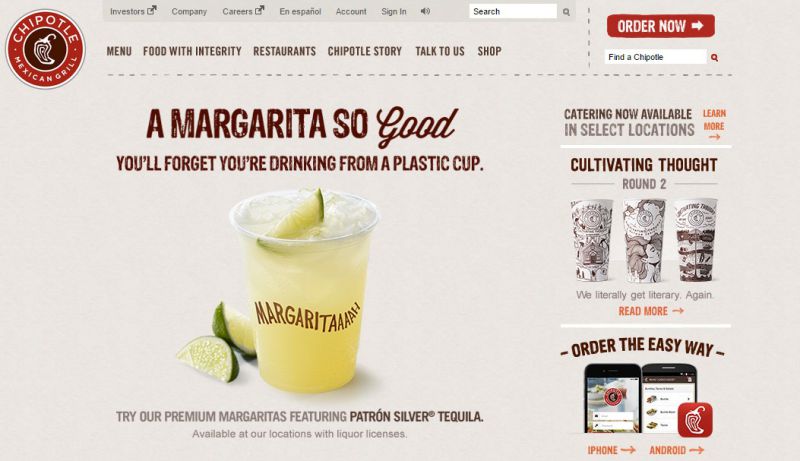
James Earl Jones. Julia Child. Ella Fitzgerald. Elmo.
Some people have an unforgettable voice. It’s as smooth as velvet or as bubbly as soda pop. There’s no mistaking that voice, and it always evokes a certain emotional response — trust or laughter or longing.
Your company has a voice, too. Like an archetype, your voice communicates who you are in an unforgettable way. In fact, your voice is informed by your archetype to emulate your company’s unique personality.
All of your content should “sound” unmistakably like your brand. Smart companies know exactly how to craft the voice of their content to connect with their customers in an emotional way that no one else can. For example:
- Chipotle is unmistakably personable and lighthearted.
- Moosejaw is roguish and playful.
- Lululemon is the best friend you can confide in at the end of a stressful day.

Is your voice unforgettable? If you’re not sure what your brand’s voice is or how to use it, don’t worry — we’ve got you covered.
But first, let’s understand the difference between voice and tone.
The Difference Between Voice and Tone
Your voice should be consistent and unchanging. It conveys your company’s personality and it’s informed by your archetype, your core principles and your brand’s character. Voice helps communicate who you are and what you stand for. It helps your customers “get” who you are and identify with you.
Unlike voice, your tone will constantly change to match a particular context. If you’re tweeting about a big accomplishment, your tone should be celebratory. If you’re helping a frustrated customer, your tone should probably be calm and helpful.
How to Find Your Brand’s Voice
To find your brand’s voice, ask these questions:
What’s our archetype? At The Whole Brain Group, we work with our clients to identify their brand archetype. This plays a major role in establishing their brand and lays the foundation for the public personality of the company.
What are our core values? Your core values drive what kind of company you want to be, and they’re key to creating culture. Core values don’t directly impact your branding, but they can be very helpful as you think about how you want to be perceived by customers.
How is our brand perceived? Ask your customers what they think your brand’s personality is. This can be very enlightening and you may be surprised by what you hear. It could either help clarify your voice or make you think twice about some of your current messaging.
If we were a fictional character, who would we be? Here’s a great way to draw inspiration and shape your understanding of your brand’s voice. We all know role models have a great impact on our lives. You can also use fictional characters as a kind of “voice role model” to influence the way you communicate your brand’s personality.
What are other brands doing? Shop around and see what brands in other industries are doing that you’d like to emulate. You should also see what your competitors are doing and find opportunities to stand out from the crowd.
Now that you’ve got a sense of your brand personality, get into character! Craft content that has a unique voice and reflects your brand. It doesn’t have to be over-the-top, but it should be unmistakably “you.”
Make sure your content consistently sounds like you. Create guidelines and make sure all your content creators have them handy.
How to Hit the Right Tone
Hitting the right tone is all about understanding your customers and practicing empathy. It’s as simple as that, but it’s not always easy. To strike the right tone, follow these guidelines.
Know your personas. Your buyer personas have specific pain points and concerns. They’ll give you insight to understand what your customers are feeling.
Consider what your customer is thinking and feeling right now. MailChimp has this mastered. They’ve created a voice and tone guide that identifies customer emotions for every single user interaction with their content and their service. MailChimp’s content creators can use the guide to immediately understand how to write to their customers in any given situation.
Know what your customer needs right now. Do they need a sympathetic ear? an advisor? a can-do Mr. or Ms. Fixit? Each of these needs will warrant a different tone.
Understand your customer’s context and you’ll hit the right tone. It doesn’t have to take a lot of time, but it does take thoughtfulness.
Still Looking For Answers? We Can Help!
Get the latest news
Blog Topics
- AI
- Analytics
- Branding & Identity
- Budget
- Construction
- Content Marketing
- Conversion Rate Optimization
- Email Marketing
- HubSpot
- Inbound Marketing
- Lead Generation
- Marketing Strategy
- News/Events
- Paid Search & PPC
- Recruiting
- Sales & Marketing
- Sales Enablement
- Search Engine Marketing
- Search Engine Optimization
- Social Media
- Thought Leadership
- Uncategorized
- Usability
- Video Marketing
- Web Hosting
- Website Design
